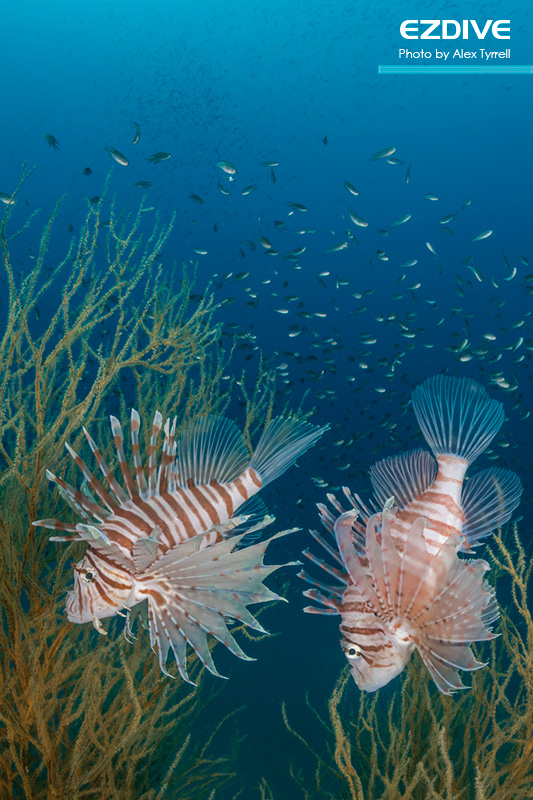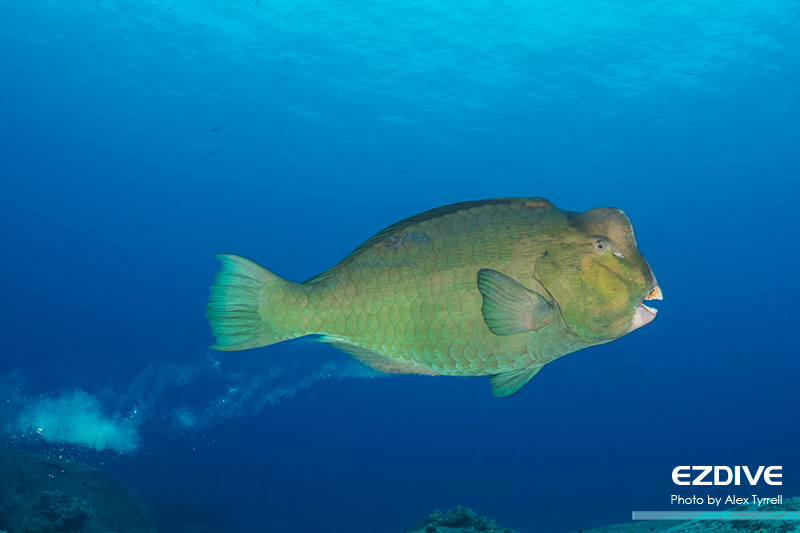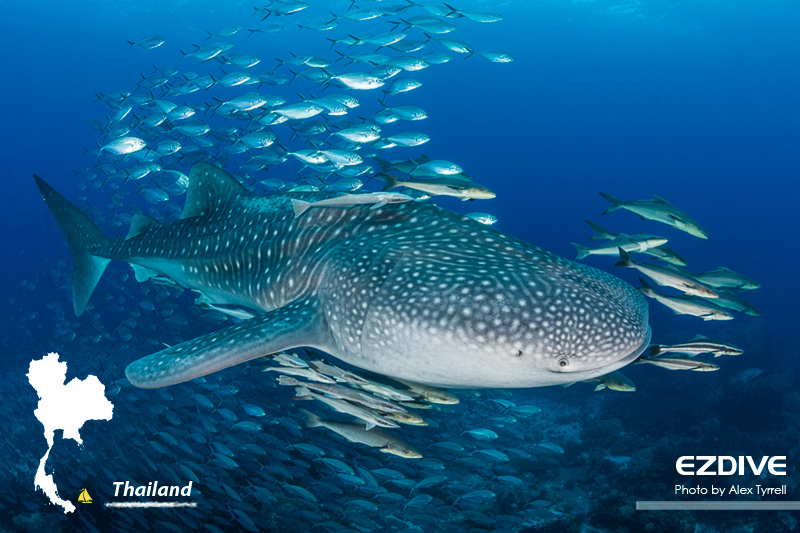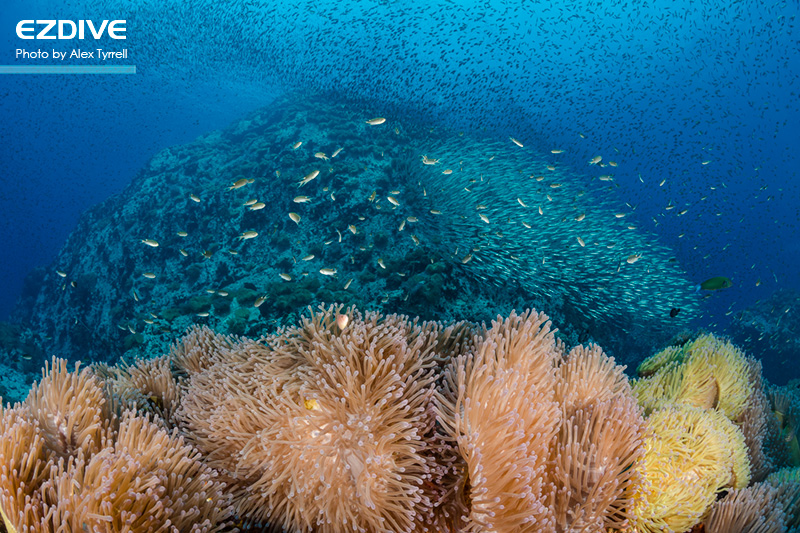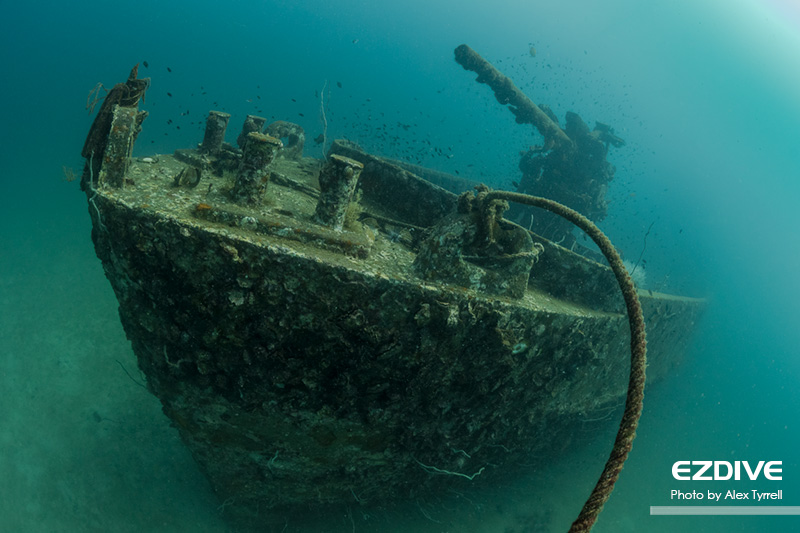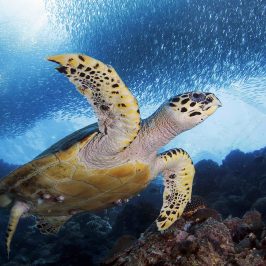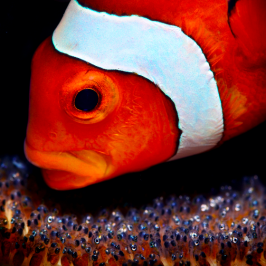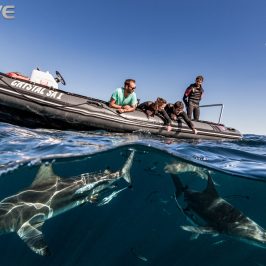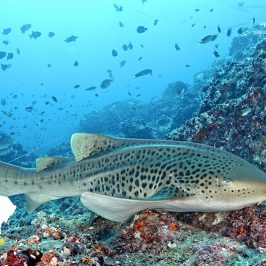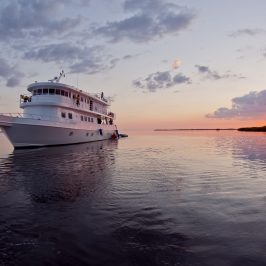The tiny rocky islet of Koh Losin has been on my diving radar for some time, being the only destination in the Gulf of Thailand that has regular sightings of the elusive Guitar Shark, known locally as Ronin.
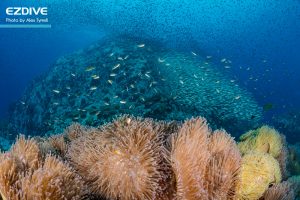
Photo and text by Alex Tyrrell
Koh Losin is located 100km offshore, near the Thai-Malaysian border, and where the Gulf meets the deeper, clear blue waters of the South China Sea. The remote position makes a liveaboard vessel the only option for diving; with two weather windows each year, either in May prior to the start of the southeast monsoon or when the seas settle again in August to September. These dates fall within the Andaman Coast off-season when some boats make the trip around the Malay Peninsula to dive the more protected waters of the Gulf. When the Similan Islands reopen in October, they make the return journey.
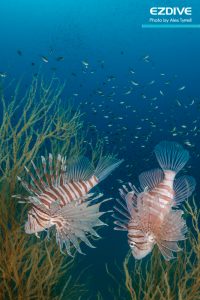 My chance to dive Koh Losin came following a conversation with a divemaster friend who had been asked to work on a bi-annual transition trip. The itinerary commenced in Chumphon Marine Park, then onto Koh Tao (where I live) and Sail Rock, which is north of Koh Phangan. This is followed by the rarely dived Koh Kra, 80 nautical miles southeast of the popular tourist destination of Koh Samui and before the final stop, a further 100 nautical miles south, Koh Losin. My friend put me in touch with Gai who was running the trip through his dive shop in Phuket, Smile Dolphin Dive, who specialize in diver training and liveaboard trips for the Chinese market. Luckily there was space available for me on the 5-day trip at the start of September.
My chance to dive Koh Losin came following a conversation with a divemaster friend who had been asked to work on a bi-annual transition trip. The itinerary commenced in Chumphon Marine Park, then onto Koh Tao (where I live) and Sail Rock, which is north of Koh Phangan. This is followed by the rarely dived Koh Kra, 80 nautical miles southeast of the popular tourist destination of Koh Samui and before the final stop, a further 100 nautical miles south, Koh Losin. My friend put me in touch with Gai who was running the trip through his dive shop in Phuket, Smile Dolphin Dive, who specialize in diver training and liveaboard trips for the Chinese market. Luckily there was space available for me on the 5-day trip at the start of September.
Waking up at Chumphon Marine Park, the trip began in perfect weather with calm seas and a clear blue sky. After an easy check-out dive at Hin Pae, we moved onto the deeper pinnacle of Kong Samliam that was home to a huge school of Bigeye Snapper at the northern end of the site. Next was the wreck of the ex-HTMS Prab, which is now adorned with numerous whip corals. The final dive of the day was at Hin Lak Ham, a site covered in Magnificent Sea Anemones providing homes to thousands of Pink Anemonefish.
Day 2 kicked off with a sunrise dive at Chumphon Pinnacle in stunningly clear water; I spent the entire dive shooting the schools of juvenile fish that are present in vast numbers at this time of year. Oxeye Scad, Bigeye Snapper and Obtuse Barracuda covered the southern pinnacle. Next, we moved to Southwest Pinnacle, hitting the water when all the dive boats had left for the morning, giving us the site to ourselves. Again, juvenile fish were prevalent with barracudas and damsels filling the water column. We then steamed south to Sail Rock, encountering huge schools of Blackfin Barracuda, Longfin Batfish and Bigeye Trevally on both dives, but the highlight for me was a pair of mating Talang Queenfish, seemingly ignoring my presence and allowing a close approach for photos.
An overnight journey saw us arrive at the isolated Koh Kra ready for an early morning dive. We dropped in over an 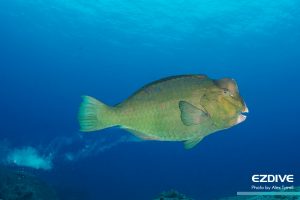 expansive field of Staghorn Coral that stretched down the length of the island. The morning light was stunning in the shallows, so I spent my time shooting a small school of Longfin Batfish that hovered near the surface, bathed in sunrays. Dive 2 was at Hin Ruex but, with a current running, we were limited to the north side to stay in the lee. After lunch the current dropped off and we descended on the southern side where we were treated to abundant hard corals, plus colourful black corals all engulfed in fusiliers. Our final dive was at Hin Soong, where we started in the shallows swimming down a sloping field of extremely healthy staghorn corals that leveled off at 18-20m leading to a sandy bottom rich in soft corals, hydroids and the typical nudibranchs and critters that this type of environment attracts.
expansive field of Staghorn Coral that stretched down the length of the island. The morning light was stunning in the shallows, so I spent my time shooting a small school of Longfin Batfish that hovered near the surface, bathed in sunrays. Dive 2 was at Hin Ruex but, with a current running, we were limited to the north side to stay in the lee. After lunch the current dropped off and we descended on the southern side where we were treated to abundant hard corals, plus colourful black corals all engulfed in fusiliers. Our final dive was at Hin Soong, where we started in the shallows swimming down a sloping field of extremely healthy staghorn corals that leveled off at 18-20m leading to a sandy bottom rich in soft corals, hydroids and the typical nudibranchs and critters that this type of environment attracts.
Our final destination on the itinerary, and the highlight of the trip, was Koh Losin. This isolated pinnacle only just breaks the surface; a small lighthouse perches on top to warn mariners of the potential danger. However, beneath the surface, the dive site is expansive with healthy and abundant coral fields thriving down to depths of 25m+, requiring numerous dives to be fully explored. My focus here was on finding the shy Guitar Shark, known locally as Ronin, which is usually seen resting on the sandy bottom at 35-40m around the edges of the dive site. The first day I did three dives constantly swimming around the site searching the sandy expanse, but had no luck. I resigned myself to not seeing one and enjoyed the final dive shooting around the pinnacle, seeing Bumphead Parrotfish, schools of Bigeye Trevally, a passing Spotted Eagle Ray, Giant Barracuda and the usual reef fishes encountered throughout the gulf.
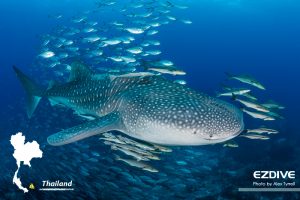 The final morning of diving gave me two opportunities to find the elusive Guitar Shark, but again the first dive was spent swimming around without a sighting. Soon it was time for my last chance to see Ronin, but immediately after descending what everyone had hoped to see on this trip made an appearance – a whaleshark. And who can resist swimming with a whaleshark? The plan immediately changed and I spent the dive accompanied by the largest fish in the ocean, together with its entourage of Whitetongue Jacks, Cobia and Sharksuckers.
The final morning of diving gave me two opportunities to find the elusive Guitar Shark, but again the first dive was spent swimming around without a sighting. Soon it was time for my last chance to see Ronin, but immediately after descending what everyone had hoped to see on this trip made an appearance – a whaleshark. And who can resist swimming with a whaleshark? The plan immediately changed and I spent the dive accompanied by the largest fish in the ocean, together with its entourage of Whitetongue Jacks, Cobia and Sharksuckers.
The 12-hour crossing back to Songkhla was across a glassy-calm sea giving me ample time to contemplate the fact that Ronin had eluded me on this occasion. However, hopefully I will get another chance to capture the photo I had envisaged this coming September when Gai has another trip scheduled to the remote Koh Losin.
Getting there:
Hat Yai has an international airport serviced by a number of different airlines, including Bangkok Airways, Air Asia, Thai Lion Air, Nok Air, Thai Smile Airways and Jetstar Asia. Most flights are domestic from the airports in Bangkok or Phuket, but there are international flights available from Kuala Lumpur and Singapore.
Chumphon Airport is only serviced by Nok Air who operate two flights per day to and from Bangkok’s Don Mueang airport
Visa:
VISA Exemption is granted to nationals of 55 different countries and regions (incl. Hong Kong, Indonesia, Japan and Philippines). VISA on Arrival is available to nationals of 19 different countries and regions (incl. China and Taiwan) at a cost of 2,000THB. For more information visit www.thaiembassy.com
Passports should be valid for at least 30 days; you may need to show proof that you have funds equivalent to at least 10,000THB and have a confirmed airline ticket showing you are flying out of Thailand within 30 days.
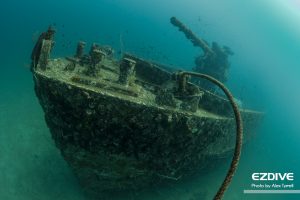
Language:
The official language is Thai, but English is readily understood, especially on the dive boats.
Currency:
The currency is Thai Baht (THB) with the exchange rate of 33THB to 1USD at the time of writing.
Electricity
Thailand uses 220volts AC 50Hz electricity. Plugs can be either 2-prong or 3-prong, with round or flat pins. 3-prong sockets can accept 2-prong plugs and commonly the socket will accept both round and flat pins. Consider bringing adaptors with you, although they can be purchased locally prior to boarding the liveaboard.
Dive Operator
Smile Dolphin Diving – http://www.smiledolphin.com
MV Chontara Beach – http://www.ctr-diving.com
MV Tapana & MV Tapana Catamaran – http://tapanaliveaboard.com
MV Venus Marina – http://www.venusmarina.com

